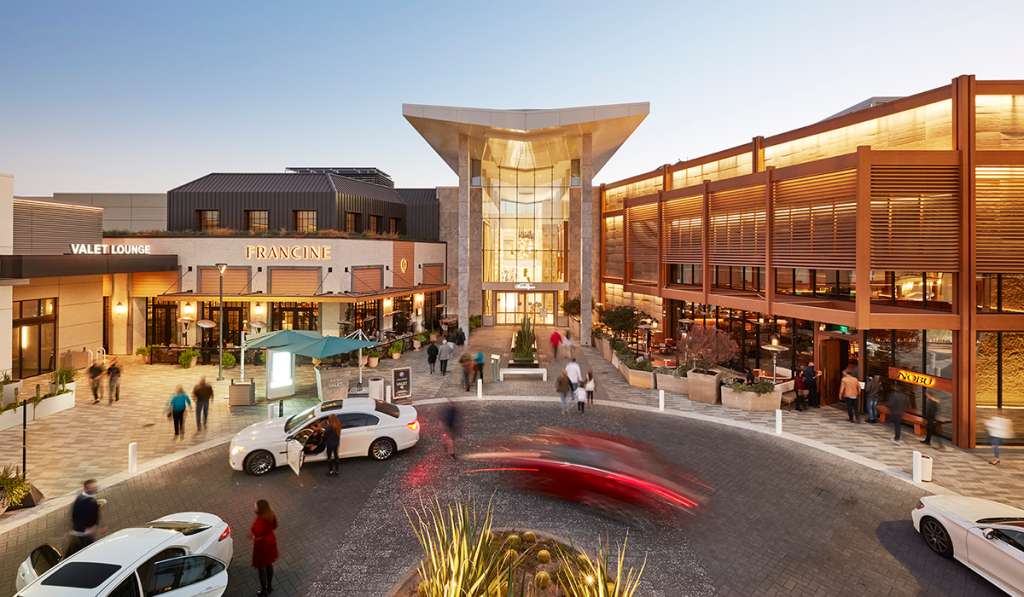
Scottsdale Fashion Square LUX Exterior. Courtesy of Scottsdale Fashion Square
Commerce makes the world go ‘round, and retail is its end play. With all the shifting and challenges of recent years, In Business Magazine decided to take a look at retail’s brick-and-mortar component, where transactions are made with a human connection.
Here’s the human voice of retail enterprises that span merchandise and service, from one-shop businesses to those aggressively expanding, and from independent location to destination shopping.
The powerhouse of destination shopping is the shopping mall. Ryan Sarbinoff explores this retail concept from a commercial real estate perspective in the accompanying article, “Evolution of Retail and Malls in the Phoenix Metro,” while we start our shopping spree at Valley gem Scottsdale Fashion Square.
Retail Concept
“Scottsdale and Greater Phoenix make up one of the fastest-growing markets in the U.S.,” says Kim Choukalas, senior vice president of leasing for Macerich, the real estate investment trust that operates many of the Valley’s shopping centers, including Scottsdale Fashion Square. She explains that, with an increasing tech presence as well as long-standing visitor credentials and a world-class resort infrastructure, the region has been an amazingly buoyant market and luxury destination. And she notes, “This is a market that loves retail: Scottsdale residents spend 50% more on retail goods than the nation overall.”
To respond to these customers, Scottsdale Fashion Square debuted its luxury wing in 2018, with high-end design elements and amenities carefully considered to be just right for the incredible luxury brands that call this center home. “By every measure, the luxury redevelopment has been a tremendous success,” Choukalas says, citing an enviable collection of new-to-market and pure luxury brands from Louis Vuitton, Brunello Cucinelli, Cartier, Saint Laurent, Bottega Veneta, Dior the mall has already attracted, with more to come. “Many of these brands remain the first and only in Arizona,” she notes. “Now, the success of luxury is inspiring more top brands to choose Scottsdale Fashion Square.”
“Local” is a key part of the motivating ethic at Agritopia in the East Valley, where Johnston & Co. is developing mixed-use Epicenter to have a strong retail component. “At Epicenter, we really focused on trying to get some of the best of Arizona, focused on food, health/wellness and lifestyle,” says CEO William Johnston. The merchandising plan focuses on having different users for different day parts — different businesses that can thrive throughout the day, that are very experiential and that are unique. “I think those are two things that are really important for retail and restaurants these days. There has to be something that sets them apart from everything else, and for us we really tried to hand-select and hand-pick and really spent time building relationships with each of the businesses that come into Epicenter,” Johnston says, adding, “The tenants that we have coming in, the businesses are well-known in the Valley and they do a fantastic job of being a great place for people to come and feel like they’re part of something outside of just a generic location. And so, feeling connected to the space and the business I think really sets certain restaurants and retailers apart.”
For Johnston, there is an added dimension to the selection. “Part of our goal for Epicenter was to add more uses and more businesses that allowed Agritopia and the surrounding neighborhoods to be even more walkable — where you don’t have to get in your car” to go find what you need, he explains. “However, that being said, we want to be a local regional draw, and so we’re pulling from outside of just Agritopia or the neighboring communities” — and specifically aiming to fill some of the needs that market research had identified. For example, “We had people saying we really want to have a higher-end, sit-down, date-night kind of restaurant.” So, Belly Kitchen & Bar, a full-service Vietnamese restaurant from Phoenix, is now open, with well-known local restaurant Buck & Rider planned to open later this year.
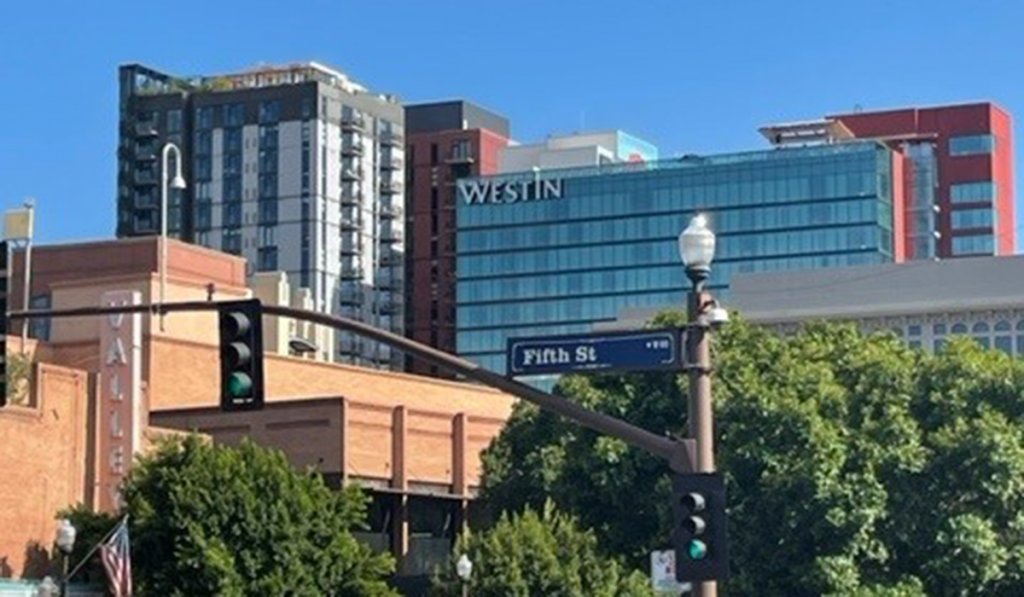
Courtesy of Downtown Tempe
Downtown Tempe is another destination shopping area. “It offers a unique shopping experience, attracting people from all walks of life — visitors, office workers, residents, students, and families,” says Lori Foster, chief strategy officer with the Downtown Tempe Authority. “The urban, energetic vibe, along with the tree-lined brick walkways lead to shopping destinations you can’t get anywhere else — literally. Over 67% of the businesses in downtown Tempe are local and independently owned and offer an eclectic mix of retail.” Plus, she notes, “The many modes of transportation servicing downtown Tempe, including the light rail, Tempe Streetcar, oodles of bike lanes and scooter access, make it accessible for all.”
Samir Sandesara, who owns Henna Shoppe with his wife, Neelam, finds being on Mill Avenue offers some unique features that benefit retail businesses like theirs. “We’re adjacent to some beautiful hiking and nature around Tempe Town Lake and Papago Park. Being in nature, watching sunsets over the lake, and the youthful vibrancy of ASU all really help commune with the spiritual side of the world.” Explaining why they believe the market supports their success, he says, “While Mill Avenue certainly has its share of clubs and night life, plenty of families also enjoy spending time with their children hiking Hayden Butte, spending time at the lake, or going for ice cream after a day at the zoo. So, as parents ourselves, we’ve built a friendly retail destination on Mill Avenue also. Kids love finding just the right crystal or bracelet for them. And, of course, temporary henna body art is always a fun way to have a truly unique experience on Mill Avenue.”
Troy Scoma has been in business in downtown Tempe with Cactus Sports for 31 years, and says that, as an ASU fan store, “We are the last independent retailer left.” For the alumnus-owned and -operated business, Scoma says, “Shop small and shop local is pretty important. The majority of our competition is now run by large corporations who aren’t headquartered in Arizona. We feel this gives us an advantage and a lot of our guests know they are supporting a local Sun Devil alumni [sic] who understands their needs and wants.” He’s kept the retail concept simple, he says, explaining he never wanted more than the single location. “It was important to focus on running the business with all the attention on customer service, attention to detail and product selection.”
Customer service is the key element for Mint Cannabis, as CEO Eivan Shahara explains, “Cannabis has been trending for the last couple of years. With the addition of recreational sales, it has added to the growth in sales and foot traffic. At the Mint, we have taken special care to devote lots of our attention to the consumer retail experience to make sure we are able to attract the lion’s share of this trend while it is hot!”
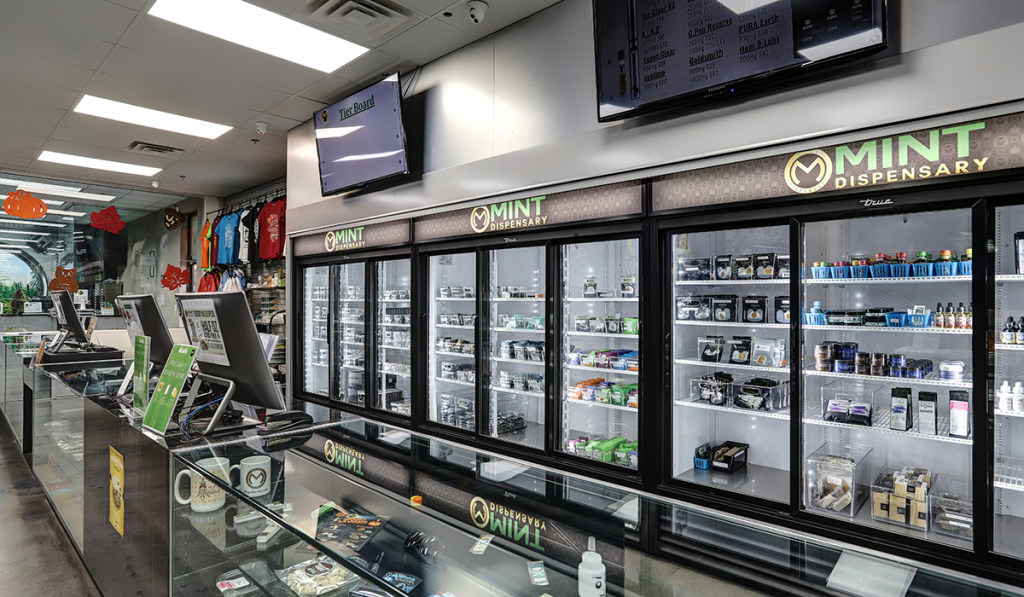
Courtesy of Mint Dispensary
In a similar vein, State Forty Eight CEO and co-founder Mike Spangenberg says, “We truly value the importance of brick-and-mortar retail because it allows us the opportunity to directly connect and engage with our community.” The apparel brand has three brick-and-mortar locations, selling Arizona-inspired T-shirts, hats, outerwear and other accessories. “While our e-commerce does well, there is something to be said about touching and being able to try on our products.” He points out that brick-and-mortar also gives the business the opportunity to showcase its customer service. “Our goal is for everyone to leave one of our retail locations with not only a great product they love, but with a better understanding of our company and who we are.” Says Spangenberg, “I believe we’re supported in this market for not only our uniquely designed products, but because people recognize that State Forty Eight is a locally run small business with heart. We strive to be authentic and make a difference in Arizona and, because of that, we’ve managed to build an incredibly supportive community.”
Cindy Dach, co-owner of Changing Hands Bookstore, also finds the community responds to the fact that the business is locally owned and operated. “During the pandemic, we had to close our doors to the public for four months. That was very difficult, and a traumatic experience. At the same time, our community went out of their way to support us with online orders and curbside pickup, and ensured that we could be here when we reopened to the public. They stick with us through thick and thin, and we’re so grateful.”
The independent bookstore opened in 1974 in downtown Tempe as a used bookstore, but very quickly became a new and used bookstore. “Shortly after that, we began carrying gift items like bookmarks and journals, and today our gifts include a vast array of items such as kitchenware, ceramics, and bath and beauty products.” Says Dach, “From the very beginning, we prioritized being a community gathering space and curated merchandise that reflects the interests and values of our great community. They responded by shopping in our two locations.”
Brick-and-mortar was important to Tracy Dempsey even before she had her own location. “In the early days of building my own brand, I recognized that, until I had the funds to afford my own brick-and-mortar retail space, I needed the support of local merchants who would purchase my products at wholesale and grace their shelves (precious real estate) with it,” says the owner of bakery and bottle shop TDOriginals and ODV Wines. “Having my products in various shops around the Valley was a tremendous marketing opportunity to reach lots of different customer in different parts of the Valley. In turn, that helped build my customer base when I decided to open my own retail shop.”
Dempsey believes her current level of revenue, marketing and partnerships are all because of those brick-and-mortar retail shops. Noting that many of her confections are still carried by and sold in a number of local retails shops that supported her from the early days, she says, “Those relationships are a contributing factor to why I carry so much local product and want to support fellow local producers — it’s a little bit of paying it forward as well as being able to offer products I truly believe in, and maybe help someone else starting out realize their own dreams as a small business owner.” As she emphasizes her belief in supporting the local community, Dempsey says, “The majority of our customer base is very much like-minded. Therein lies the support and the success.”
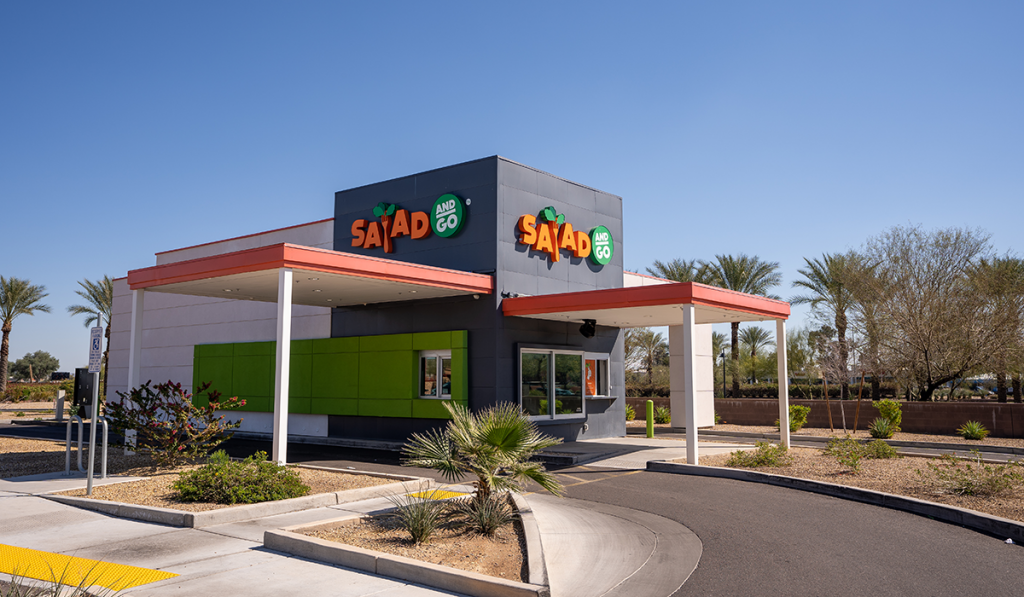
Courtesy of Salad And Go
Salad and Go was founded as a brick-and-mortar concept but with its own approach to quick-service restaurants: drive-thru only. “The brand was designed to revolutionize the industry with its ease, affordability and access to fresh, made-to-order and healthy meals, including salads, wraps, breakfast burritos and soup as well as delicious beverages such as hand-crafted lemonades, teas, and cold brew,” says CEO Charlie Morrison. Since opening its first location in Gilbert in 2013, Salad and Go now has more than 80 locations open across Arizona, Texas, Oklahoma and, soon, Nevada. “We are currently operating more than 45 locations in the Greater Phoenix area and are excited to continue expansion of our mission in our home state in 2023,” Morrison continues.
The business model emphasizes the value of local. “We’ve vertically integrated operations and distribution, and we source our ingredients directly from high-quality local farmers and suppliers whenever possible,” Morrison says, explaining, “This model ensures each meal has fresh, quality ingredients and that our costs remain low. Salad and Go’s drive-thru only concept has seen so much success due to the vertical supply chain’s efficiency, which in turn allows us to provide high-value healthy choices to our guests.” Salad and Go also supports the community it is part of through various partnerships, fundraisers and weekly donations to those in need.
Kevin Fretz, managing director of franchise finance at Western Alliance Bank, says his department is seeing operators in the limited-service restaurant section, especially the QSR subsector, continue to show remarkable resilience in the face of the intense economic headwinds of 2022, “and therefore remain relatively safe and stable investments over time,” he says.
“More specifically,” Fretz continues, “the inflationary spike the nation saw in 2022 was the strongest headwind the industry has experienced in decades, but operators have generally proven to be quick on their feet to make necessary staffing and pricing changes. The nimbleness we saw at the height of the pandemic — where operators modified their customer interface procedures to adhere to COVID protocols such as pivoting to drive-thru and takeout — was seen again in 2022. This time around, they’ve made prudent pricing and operational adjustments to accommodate these inflationary hurdles.”
For the bank itself, in-person banking is still important although the use of digital services has been increasing. “Yet,” says Jeff Schelter, manager director of commercial banking at Alliance Bank of Arizona, “despite growth and reliance on technology, relationships are proving to be more important than ever before.”
Impact of Online Ordering and Direct Delivery
“The shift toward convenience in our industry is exactly why we created Salad and Go to make healthy food convenient and accessible,” Morrison says. Guests can order at the drive-thru or place orders online to pick-up in person. The business model’s efficiency has allowed the brand and its guests to make and receive orders quickly and without complications — even with its made-to-order model to ensure freshness. Some Salad and Go locations feature double drive-thru lanes and a pickup window, allowing team members to serve multiple guests’ needs at once and maintain the order and flow of business operations.
When Dempsey was starting TDOriginals, she says she “actually dabbled in both on-line order fulfilling and direct delivery.” Realizing there are a lot of moving parts to being able to be successful at both and/or either, she decided to let go of the on-line ordering as well as direct delivery. “I don’t think there is a great impact on our business,” she says, noting, “We are a destination location for wine, desserts, and we have a sweet little space that I believe our customers enjoy visiting. We’re offering more of an in-person shopping experience than a quick, on-line shopping solution.”
At State Forty Eight, Spangenberg says, “We understand how popular online ordering has become, and we do our best to mimic our customer service via e-commerce.” But his belief in the value of in-person shopping is the reason the company opened its third retail location in Gilbert. “The beauty of the e-commerce side of our business is that we’re not solely relying on in-person shopping, so we have some flexibility — and a ton of data that we can use to our advantage,” says Spangenberg. “We pay attention to trends and the behaviors of our customers to inform our business hours, as well take note of what products are most popular online, so that we can keep them stocked in store.”
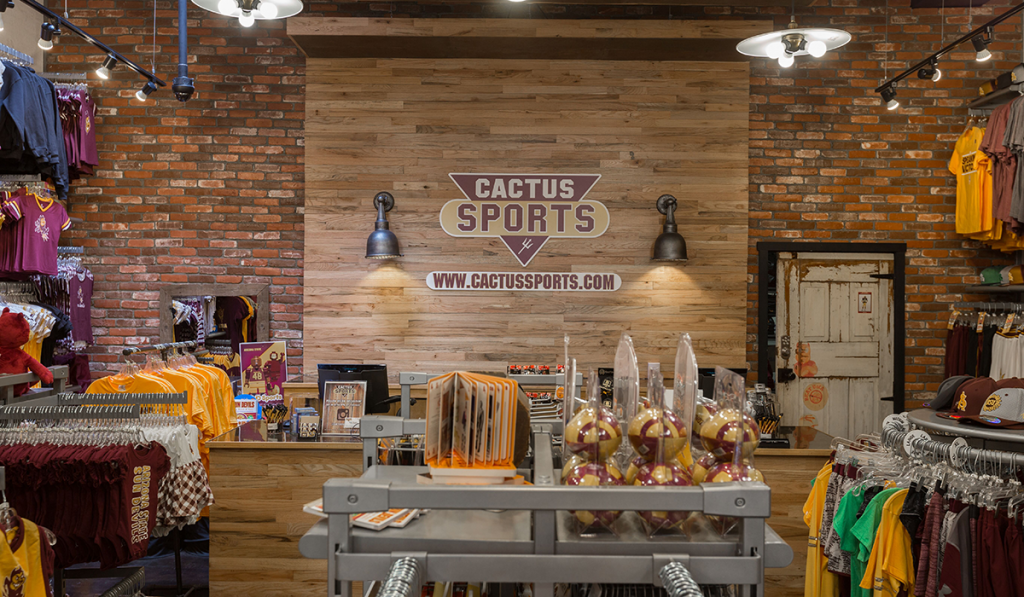
Courtesy of Cactus Sports
As the proprietor of a small mom-and-pop store, Scoma says Cactus Sports doesn’t have the budget to spend big money on SEO to compete online with the large corporations. “Luckily, we are a niche business that still has heavy foot traffic that wants to touch and feel products in person,” he says. He believes getting licensed ASU products for a game is part of an experience and buying online is just not the same. “Then there is also tourism and bringing back something from your visit — it just doesn’t translate to online purchases,” he says. “However, being local and independent allows us to react to trends faster.”
“Honestly, there are certain areas where we simply cannot compete,” says Dach, pointing out that Changing Hands is not a large warehouse; as a brick-and-mortar business, the model is fundamentally different. “We will always lose a sale if, for example, we are out of a book and someone wants it the same day or the next day.” Nor can she compete with an online mega-retailer who devalues books to sell, often at or below cost, as a loss-leader. “Fortunately, though, our customers want to come into our space. They want to gather and talk about authors and about writing and buy not just books, but a unique candle, for example, or a greeting card or any number of the hundreds of non-book gift items we carry. They want us to be here so that they can browse with a friend,” Dach says. “Put simply, we are supported by a community that wants to keep us here. It means everything to us.”
It’s a wholly different situation for Shahara, who notes there is no delivery in the cannabis industry. And, while online ordering is allowed, consumers are still required to visit the brick-and-mortar location to finish their transaction onsite. For the consumer who prefers online and delivery, Mint Cannabis offers quick and efficient express service with online orders. “We strongly believe in well-trained employees and the best customer service,” Shahara says, noting that, in cannabis, a large percentage of customers still need more and better information. “We make sure we are very well versed on the latest and the greatest, so we can pass that on to our customers.”
Foster points to lessons from the pandemic underscoring the need for brick-and-mortar merchants to be active in both the physical and virtual realms — a lesson she believes most businesses in Downtown Tempe took to heart, and worked to improve their web stores and delivery options. Acknowledging the convenience of online ordering and doorstep delivery as an asset, Foster notes the value of the in-store experience, the engagement with a well-trained staffer to answer questions, make suggestions and try out products before purchase. “The combination of online and in-store operations result in a win-win for the merchant and the customer.”
In fact, Sandesara believes the growth of online ordering has helped the Henna Shoppe. “Much of what customers (ourselves included) buy online is either comparison shopping large ticket items or everyday necessities.” What’s missing is the experience of discovery. “When you come into our stores, you’re transported. You smell the incense, feel the crystals, hear the singing bowls, try on the clothes. So much of our product is unique and one-of-a-kind, that if you love what you’re holding, there’s not likely to be another one quite like it.”
Henna Shoppe does have a website, but Sandesara says much of what most people buy are the repeat necessities they had already bought in-store.
Choukalas says Macerich views brick-and-mortar stores as a complement to online shopping, but at the same time points out many brands that began online are increasingly opening brick-and-mortar locations at Macerich’s centers so that shoppers can physically experience their merchandise — from Alo Yoga to UNTUCKit to Warby Parker. “Of course, along with traditional shopping visits, we also offer curbside pickup, dining takeout and buy online/pick-up in-store options to meet the consumer’s needs,” she says.
Observing that, after the past few years, people are hungrier than ever for in-person experiences, Choukalas believes shoppers want to see, touch and feel the quality of iconic and trusted labels as well as trendy, up-and-coming new brands — with comfort and ease at every turn. “At Scottsdale Fashion Square, people encounter the full gamut of offerings — luxury and contemporary brands, experiential opportunities, digitally native brands and great dining — that together deliver the rich, multisensory experience people want.
“What’s more,” she continues, “with the challenges in e-commerce right now, from layoffs to shipping delays, we’re seeing shoppers choosing to select merchandise they can bring home right then and there.”
For the Epicenter businesses, Johnston believes e-commerce has actually expanded what they can do sales volume-wise because it gives them an online presence as well. “People maybe see them on Instagram or have seen an article about them,” he says. “But for the most part, I would say the bulk of shoppers that will be coming to retail at Epicenter, that come to Agritopia already, they come because they want to do something — they want to not just get a generic item that has zero connection to them.” Using shoes as one example, he says, “You can get shoes on Amazon or online somewhere, but can you get the special, unique, Jordan releases that Manor has? Not really.” And where it comes to food, delivery services offer convenience, but “the quality of what you get delivered versus what you get when you dine in is just always different. And the quality’s always better in store.” For dining and also for softgoods, “You want the best experience, and you have to go to a brick-and-mortar for that.” For the health and wellness tenants, there’s an additional element to on-site versus online. “If you want to feel like you are part of a group of people that are your friends, your colleagues, your daily routine, going to a place like Bar 3 or The Collective — two of our fitness tenants — there’s a big difference.”
Encouraging Foot Traffic
“We host many events, which draw people from around the Valley,” says Changing Hands Bookstore’s Dach. Some are author events and some are community events, and Dach notes that a good number of them generate earned media. The bookstore also hosts discussions on current events, celebrations of book releases, political discussions and much more. An active e-newsletter and a large social media presence are augmented by a select bit of print, radio, television and digital marketing. “We’re also in the middle of updating our website to better reflect online the experience of being at Changing Hands Bookstore in person.”
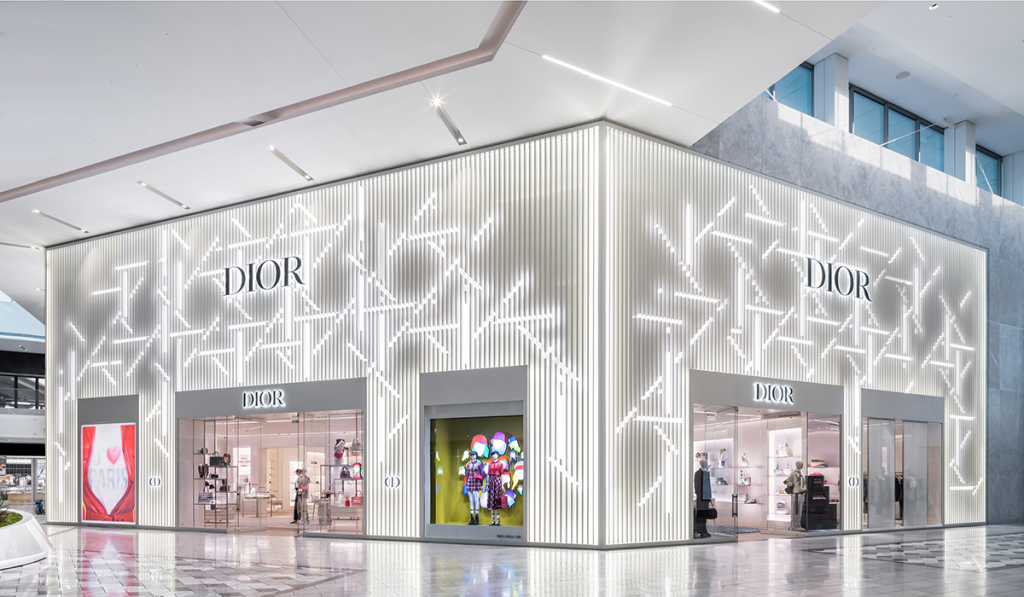
Courtesy of Scottsdale Fashion Square
Additionally, Dach notes the bookstore’s Phoenix location has a beer/wine/coffee bar inside the bookstore. “A guest can get a glass of wine, beer or a latte with a tasty treat and roam the bookstore for hours,” she says. “First Draft Book Bar is a unique experience in our bookstore. It drives its own traffic.”
For Salad and Go, which is expanding across the U.S. and had two new market entries last month in Houston and Las Vegas, Morrison says, “We announce our grand openings locally to generate buzz and conduct special promotions whenever possible to encourage attendance and give back to the community.” Once the restaurant is established in a community, he says, “Our growth is driven by those who love what we do and the delicious offerings we provide at our stores.”
State Forty Eight has relied on the traditional marketing tactics of social media, email, text messaging and discounts to drive traffic, but Spangenberg says the business is beginning to implement monthly activations at its locations. “We love our community, so we aim to add value to shopping in store,” he says. “We will often sell exclusive or limited-edition products in-store only, we’ll throw community block parties, put on sale events with live music, host local markets and invite other local vendors to set up in our parking lot, incentivize with freebies like food and drinks with purchase, etc.” The aim is to create a fun and welcoming atmosphere for customers, show appreciation for the community and “separate ourselves from the rest by creating a memorable experience that leads to genuine connection with our brand and our team.”
Dempsey says that, at TDOriginals and ODV Wines, “One of the biggest things we do is to try to make everyone who walks through the door feel welcome and to build relationships.” She shares news of an array of experiences that include wine sampling, cooking classes and meet-the-winemaker events through the business’s newsletter and social media platforms, and thanks “our friend who is a public relations professional” for help getting word out to the media about events and other happenings. “Our customers are precious to us and the reason we have managed to maintain this humble but relatively successful little business,” Dempsey says, sharing, “I’m big on quizzing folks about how they found us, what brought them in, et cetera. A good many answer with, ‘so and so told me about you,’ and then many mention looking for certain products on search engines and being led to us.”
At Cactus Sports, Scoma believes foot traffic follows from the business staying true to its roots. “We embrace our shop-small, shop-local presence, and being Sun Devil-owned and -operated means a lot to our alumni guests,” he says. “Social media plays a big part in driving traffic to what makes us unique amongst our competition.” And he shares, “What’s selling may surprise some people, but crewneck and hooded sweatshirts sell all year round no matter how hot it gets in Arizona.”
Many of the downtown Tempe retailers have reported that 2021-2022 sales are back up to pre-COVID levels and many surpassed their goals last year, according to Foster. “The merchants that are nimble and in touch with their customers can react to market demands — whether it’s the latest trends in fashion, food or drink,” she notes. And she has found the downtown merchants are well-versed in sharing the shopping/dining/personal service experiences of customers in social media. “They know their markets and cater their products and services to them,” she says.
Sandesara, for instance, says he and his wife are seeing a deeper embrace of the entire Bohemian/naturalistic lifestyle impacting foot traffic for Henna Shoppe. “We think [in] the past couple years people really had a chance to reflect on the importance of being at peace with their surroundings and focusing on their own mental health,” he says. Noting that there’s also been an increased shift to more natural products, he says a line of clothing made of natural fibers that Henna Shoppe recently launched has been very well received. And while most of their advertising is through word of mouth, he notes, “Of course, being on Mill Avenue generates a good amount of foot traffic in its own right.”
Observing that the definition of what a shopping center means and brings to a community has changed and pointing out that the best centers in the country offer not only great shopping but a range of outstanding experiences, Choukalas says Macerich responds to those changes by constantly refining and curating the mix of offerings at Scottsdale Fashion Square. “Along with the best luxury brands, we offer an array of flagship retailers, elevated food and beverage choices, fitness and well-being, art and artistry, co-working, and purposeful mixed-use densification,” she says.
She notes, in fact, that Macerich’s town center strategy of adding density and new uses to its top-performing retail properties in great locations is exactly in sync with how people want to engage with places today. “People want proximity, convenience and the ability to do exciting, in-person activities at places they enjoy, such as their favorite retail destinations,” she says. “We continue to evolve Scottsdale Fashion Square with several innovative uses, such as the Caesars Republic Hotel, opening in February 2024; a 30,000-square-foot, high-end Life Time fitness currently under construction; and the co-working space Industrious, which opened in 2019.”
Johnston believes foot traffic for Epicenter got a boost from the existing reputation of Joe’s Farm Grill and The Coffee Shop and Bar None in Agritopia. “People have been excited about it for a long time, and so, through PR as we announce different things, it really has done well,” he says.
Of its draw, Johnston says his company’s market studies show that the number of regulars who come to the businesses in Agritopia from outside the Gilbert area fairly evenly matches the number who live in the Gilbert area. And the development also attracts national travelers thanks to its proximity to Mesa Gateway Airport. “We get a lot of people that are flying in from Chicago, the Dakotas, that whole area as well. It’s beneficial to have that proximity to the airport where, when they get off the plane, they’re looking for a place to go, and if you type ‘best restaurant’ on Yelp or Google, Farm Grill and Coffee Shop always pop up pretty quickly on those lists.”
How does that translate to foot traffic? “Once they come out and they see Epicenter, it’s like, ‘Oh my gosh, what is this thing?’ And then they start to explore.” Careful attention goes into creating and building on that first impression, focusing on getting people to come out for more than just one thing. “Let’s say they go to Belly for lunch. Once they’ve done that, because of what they can see visually when they walk out that door, they’re going to want to explore a bit more. So they might walk east and they’ll go look at more stuff at Epicenter. Or they could walk west and look at The Farm’s own coffee shop and walk The Farm and see the organic produce that’s being grown.” And have that generate interest in return visits for more exploring. “As more and more businesses open, foot traffic will continue to increase,” Johnston says.
“We really try to make it a place where people can have a longer dwell time and enjoy sitting a part of longer,” says Johnston.
The two parts of this cover story are:














Speak Your Mind
You must be logged in to post a comment.